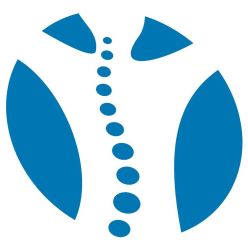About me
I specialize in the treatment of scoliosis and spinal deformity. I have been working with scoliotic patients since 1999. I was interested in scoliosis already during my study of physiotherapy at Palacky University in Olomouc and Charles University in Prague. I have successfully completed over 40 specialized courses. Till now I have actively participated in a number of various conferences concerning diagnostics and therapy of musculoskeletal disorders.
In my practice I apply various approaches and techniques and their modifications for treatment of scoliosis such as methods according to Lehnert-Schroth, Niederhöffer and Becker, Gocht and Gessner, Klapp, Karski, methods influenced by developmental locomotion etc.
What can I offer?
1) Consultation including family history, examination and individual therapy for patients with scoliosis.
80-90 minutes = 2 000,- CZK
2) Diagnostics of your child, assessment whether there may exists a risk of scoliosis development.
50-60 minutes = 1 400,- CZK
You can examine yourself if there are some indicators of scoliosis such as asymmetry of shoulder, shoulder blade, spine, rib cage, pelvis, hips and legs. Bending forward make curve and rib hump more obvious.
What can you expect?
Each scoliosis case is different and requires individual assessment and appropriate treatment. During consultation I will assess your posture and I will search for signs of scoliosis. We can discuss available physiotherapy options and I will recommend you an exercise treatment plan. The aim is to improve your posture and your appearance, to stop progression of scoliosis and to remove a possible pain. It is important to perform scoliosis exercises with precision and emphasis on present asymmetry.
What is scoliosis?
Idiopathic scoliosis is a three-dimensional deformity of the spine as well as the whole body. Thoracic cage deformity in scoliosis causes changes in breathing. Scoliosis is usually evaluated using X-ray of spine, mostly by Cobb´s method in the frontal and sagittal planes. Scoliosis develops also rotational deformity in the transversal plane. We can evaluate rotation of vertebrae or changes of trunk shape angle. Angle of trunk rotation can be evaluated by a scoliometer or by surface topography.
Idiopathic scoliosis is alimiting complex multifactorial disease that leads to dysfunction of a number of systems in the body. In scoliosis can be found abnormalities of connective tissues, a greater extensibility of soft tissue and joint hypermobility, abnormalities of the neuromuscular system, central nervous system, hormonal system, platelets, asymmetries of bone growth and bone mass. Scoliosis can be influenced by genetic and mechanical factors as well as by intrauterine or postnatal environmental factors.
Both children and adults with scoliosis need physiotherapy and modification of the lifestyle. Moreover, serious scoliosis requires during treatment using of a back brace. Actually, only a very small number of patients with scoliosis need surgery, particularly when they do not follow recommendations of a physiotherapist and do not use brace treatment.
